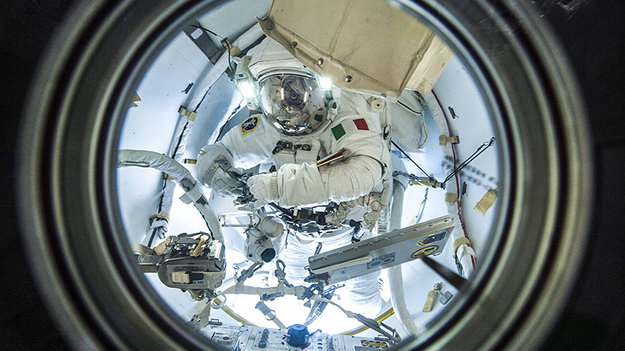The constellation of Virgo (The Virgin) is the largest of the Zodiac constellations, and the second largest overall after Hydra (The Water Snake). Its most appealing feature, however, is the sheer number of galaxies that lie within it. In this picture, among a crowd of face- and edge-on spiral, elliptical, and irregular galaxies, lies NGC 4866, a lenticular galaxy situated about 80 million light-years from Earth.
Monday, July 15, 2013
NASA Hubble Finds New Neptune Moon
NASA's
Hubble Space Telescope has discovered a new moon orbiting the distant
blue-green planet Neptune, the 14th known to be circling the giant
planet.
Phytoplankton Bloom in the Norwegian Sea
The
waters off Iceland rank among the world's most productive fisheries.
The reason for the abundance is an ample supply of phytoplankton, the
base of the marine food chain. Like any plant, microscopic phytoplankton
need sunlight and nutrients to survive. Iceland's coastal waters offer
both during the long days of summer.
Second Spacewalk
Trek to Mount Sharp Begins
After
busily exploring the Glenelg region of Gale Crater, Curiosity is moving
on. The rover is starting a 5 mile, or about an 8 kilometer trek
southwest towards the foothills of Mt Sharp.
Raystown Ray
NASA Hubble Finds a True Blue Planet
Space Station Ocean Imager Available to More Scientists
The
International Space Station is expanding the use of its Hyperspectral
Imager for the Coastal Ocean (HICO) instrument to more Earth scientists
and environmental researchers.
Galileo spreads its wings
Deployment of the solar wings on the latest Galileo satellite is shown being checked at ESA's technical hub in the Netherlands. The navigation satellite's pair of 1 x 5 m solar wings, carrying more than 2500 state-of-the-art gallium arsenide solar cells, will power the satellite during its 12-year working life.
Galileo's wings
Subscribe to:
Comments (Atom)












